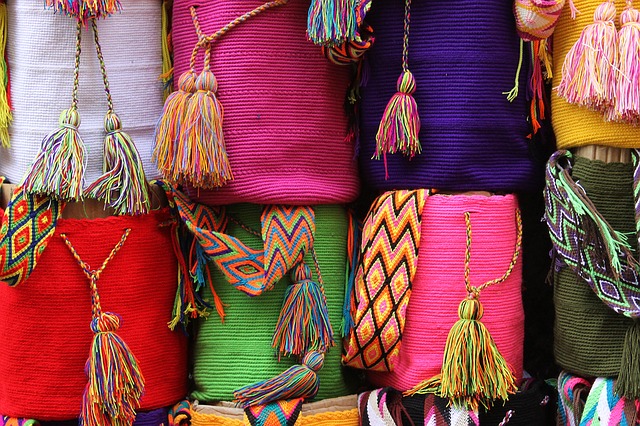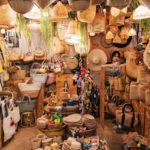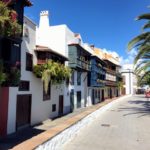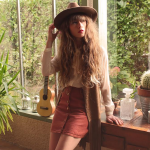Are You a Souvenir Lover?

Souvenir shopping is one of my favourite parts of travel. But what about the experiences, you ask? Bear with me. The experience of travel is of course the best part, but finding something unique and locally made to take home with you when you inevitably have to go back to reality is an important consideration.
People who travel to Europe are often told to ‘enjoy the shopping’. Shopping is fine but why buy the same clothes you can get at home in a foreign country? Unless you’re getting a bargain or it’s a locally made item, then I see little point in shopping for regular items. Souvenir shopping, on the other hand, is a pursuit I greatly enjoy. I love to bring home something that reminds me of my travels. I collect shirts and jumpers from each destination. I want the shirt to have the country or city name on it, to remind me when I return that ‘I bought this in Greece or Italy or Spain’ and so on. Other than shirts, I also love locally made, unique jewellery.
The Celtic knot design earrings from Ireland, featuring a deep green reminiscent of the Emerald Isle; the bracelet from Notre-Dame de la Garde in Marseille, with a hanging charm of the virgin Mary and baby Jesus. On the back of the charm is written ‘Protégé Moi’. I don’t speak French, but I could tell immediately that it says ‘protect me’. I am not religious, but it’s a unique souvenir to take away from Marseille and a reminder of having visited Notre-Dame de la Garde.
When I visited Dubai, it was the metalwork that stole my attention. I bought a colourful bangle and a decorative bowl, a beautiful silver pot that looks as though if you rub it, a genie will come out. Much of the metalwork in Dubai had an intensity, a deep gold or silver with splashes of colour and weighing more than you would expect. I had to keep the purchases relatively small so that I didn’t have a problem with the weight of my luggage. There are bigger and more impressive versions of what I bought, but a traveller needs to keep size in mind when buying souvenirs.
Any envy, even admiration, can lead to the person gazed upon getting the evil eye. Wearing such a charm is said to repel the misfortune back onto the other. These are common and popular souvenirs for tourists.
In Greece, I love items with the Greek flag, or an owl – the symbol of the goddess Athena in mythology. I also like to buy jewellery with the Greek key design, or the ‘mati’. The ‘mati’ can be traced back to around the 6th century BCE. The charm is a disc or ball, with the predominant colours being blue and white circles in the shape of an eye. It is said that having someone look upon another with envy can bring misfortune. This is the evil eye. It does not need to be done intentionally – any envy, even admiration, can lead to the person gazed upon getting the evil eye.
Wearing such a charm is said to repel the misfortune back onto the other. These are common and popular souvenirs for tourists, but are also ingrained into the culture and can be found in many houses, on boats and jewellery worn by locals. They are not limited to Greece, and can also be found in Turkey, Egypt, Southern Italy, Morocco, Iraq, Iran and Afghanistan. The process of casting out the evil eye, if the affected person was not protected by a charm, is interesting. In Greece, a process called a xematiasma occurs. An older relative who knows the process recites a secret prayer to heal the affected person. These prayers must remain secret, hence not everyone is versed in the art of xematiasma.
Ioannina, on the Western side of Greece, is well-known for locally made silver. The area of Epirus is highly regarded for its craft and metalwork. I bought a unique, locally made silver necklace with a tear shaped pendant. I know that I not only added a lovely item to my collection but that I supported local business. Someone well-known outside of Greece descends from some of these original silversmiths – Sotirious Voulgaris, the founder of BVLGARI. Born in nearby Kalarites village, he worked as a jeweller, and his first store opened in Paramythia, approximately 53 kilometres outside of Ioannina. He then moved to Italy and founded BVLGARI.
I bought a unique, locally made silver necklace with a tear shaped pendant. I know that I not only added a lovely item to my collection but that I supported local business.
Rugs, quilts and cushions are easily identifiable in Epirus. They have unique and intricate weaving, the colours overwhelmingly navy, deep red and white. They were of course too large to buy as a souvenir, but I enjoyed learning about the folk art, sewing and history of the area.
A souvenir that won’t last long, but is still enjoyable, was a hand cream made from mastiha (mastic), a famous product from the Greek island of Chios with a unique flavour of pine and cedar. It comes from tree sap and is made into a chewing gum. It is used as a flavouring in foods and as a scent in cosmetic products.
My least successful purchase was of a bag, in Spain. I was dreaming of Spanish leather but didn’t want to spend a fortune. I settled for something within my budget, and attempted to find out if it was made in Spain. I couldn’t find a label, so in the end I went up to the register and the assistant didn’t speak English. I was in a large department store in Barcelona and I couldn’t make myself understood. I attempted to get her to understand with gesturing to the bag and repeating ‘Spain’ in Spanish. She seemed to understand and nodded her head vigorously. ‘Si, si!’ I thought this meant that the bag was Spanish made. I got it back to the hotel, emptied all the paper from inside and guess what? The label hiding at the bottom said ‘Made in China’. I was not impressed. But I can’t want to see what I can bring back from my next trip!








